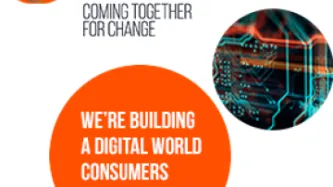Search
Content type: Examples
In March 2018 the Palo Alto startup Mindstrong Health, founded by three doctors, began clinical tests of an app that uses patients' interactions with their smartphones to monitor their mental state. The app, which is being tested on people with serious illness, measures the way patients swipe, tap, and type into their phones; the encrypted baseline and ongoing data is then analysed using machine learning to find patterns that indicate brain disorders such as a relapse into depression, substance…
Content type: Examples
In October 2018 Amazon patented a new version of its Alexa virtual assistant that would analyse speech to identify signs of illness or emotion and offer to sell remedies. The patent also envisions using the technology to target ads. Although the company may never exploit the patent, the NHS had previously announced it intended to make information from its online NHS Choices service available via Alexa.
https://www.telegraph.co.uk/technology/2018/10/09/amazon-patents-new-alexa-feature-knows-…
Content type: Advocacy
Este informe es presentado por Derechos Digitales, Ciudadano Inteligente, Fundación ProAcceso y Privacy International. Derechos Digitales es una organización no gubernamental de defensa, promoción y desarrollo de los derechos humanos en el entorno digital. Ciudadano Inteligente es una organización dedicada a fortalecer la democracia y reducir la desigualdad a través de la transparencia y la participación ciudadana. Fundación ProAcceso se dedica a la defensa del derecho de acceso a la…
Content type: Advocacy
Consumers benefit from the existence of competitive markets, in which they can freely choose among a wide range of products and services. Competition policy plays an important role in this regard by ensuring that competition is not disrupted in a way that can harm consumers directly (e.g. leading to price increases or less choice) or indirectly (e.g. weakening competition as a process by hampering the ability of firms to compete on the merits).
Content type: App Analysis
This documentation demonstrates actions taken by the test user and the apps subsequent responses.
Test user action 1: The user taps on the application icon, which opens the application
Response from app: The application is initialised and the following data is sent and received by the app:
Immediately after the app is opened, the following HTTP GET request is made to graph.facebook.com
GET https://graph.facebook.com/v3.0/115882278440564?fields=…
Content type: App Analysis
This documentation demonstrates actions taken by the test user and the apps subsequent responses.
Test user action 1: The user taps on the application icon, which opens the application
Response from app: The application is initialised and the following data is sent and received by the app:
Immediately after the app is opened, the following data is sent to graph.facebook.com (Graph)
The app sends the following HTTP GET request to graph.facebook.com
GET https://…
Content type: App Analysis
This documentation demonstrates actions taken by the test user and the apps subsequent responses.
Test user action 1: The user taps on the application icon, which opens the application
Response from app: The application is initialised and the following data is sent and received by the app:
Immediately after the app is opened, the following data is sent to graph.facebook.com (Graph)
The following HTTP GET request is made to graph.facebook.com
GET https://graph.…
Content type: App Analysis
This documentation demonstrates actions taken by the test user and the apps subsequent responses.
Test user action 1: The user taps on the application icon, which opens the application
Response from app: The application is initialised and the following data is sent and received by the app:
Immediately after the app is opened, the following data is sent to graph.facebook.com (Graph)
The following HTTP GET request is made to graph.facebook.com
GET https://graph.facebook.…
Content type: App Analysis
This documentation demonstrates actions taken by the test user and the apps subsequent responses.
Test user action 1: The user taps on the application icon, which opens the application
Response from app: The application is initialised and the following data is sent and received by the app:
Immediately after the app is opened, the following data is sent to graph.facebook.com (Graph)
The following HTTP GET request is made to graph.facebook.com
GET https://graph.…
Content type: App Analysis
This app prerequest permissions when installing from the app store, a screenshot is attached for reference
This documentation demonstrates actions taken by the test user and the apps subsequent responses.
Test user action 1: The user taps on the application icon, which opens the application
Response from app: The application is initialised and the following data is sent and received by the app:
Immediately after the app is opened, the following data is sent to…
Content type: App Analysis
This documentation demonstrates actions taken by the test user and the apps subsequent responses.
Test user action 1: The user taps on the application icon, which opens the application
Response from app: The application is initialised and the following data is sent and received by the app:
Immediately after the app is opened, the following data is sent to graph.facebook.com (Graph)
The following HTTP GET request is made to graph.facebook.com
GET https://graph.facebook.…
Content type: App Analysis
This documentation demonstrates actions taken by the test user and the apps subsequent responses.
Test user action 1: The user taps on the application icon, which opens the application
Response from app: The application is initialised and the following data is sent and received by the app:
Immediately after the app is opened, the following data is sent to graph.facebook.com (Graph)
format: json
sdk: android
event…
Content type: App Analysis
This documentation demonstrates actions taken by the test user and the apps subsequent responses.
Test user action 1: The user taps on the application icon, which opens the application
Response from app: The application is initialised and the following data is sent and received by the app:
Immediately after the app is opened, the following data is sent to graph.facebook.com (Graph)
Form data:
format: json
sdk: android…
Content type: App Analysis
This documentation demonstrates actions taken by the test user and the apps subsequent responses.
Test user action 1: The user taps on the application icon, which opens the application
Response from app: The application is initialised and the following data is sent and received by the app:
Immediately after the app is opened, the app sends the following HTTP GET request to graph.facebook.com
GET https://graph.facebook.com/v2.11/174829003346?fields=…
Content type: App Analysis
This documentation demonstrates actions taken by the test user and the apps subsequent responses.
Test user action 1: The user taps on the application icon, which opens the application
Response from app: The application is initialised and the following data is sent and received by the app:
Immediately after the app is opened, the following data is sent to graph.facebook.com (Graph)
format: json
sdk: android
event…
Content type: App Analysis
This documentation demonstrates actions taken by the test user and the apps subsequent responses.
Test user action 1: The user taps on the application icon, which opens the application
Response from app: The application is initialised and the following data is sent and received by the app:
Immediately after the app is opened, the following data is sent to graph.facebook.com (Graph)
The following HTTP GET request is made to graph.facebook.com
GET https://graph.facebook.…
Content type: News & Analysis
Profiling and Automated Decision Making: Is Artificial Intelligence Violating Your Right to Privacy?
Image source creative commons.
The below piece was originally posted on the UNRISD site here.
How AI is affecting our human rights
Artificial Intelligence (AI) is part of our daily lives. Its many applications inform almost all sectors of society: from the way we interact on social media, to the way traffic flows are managed in cities; from access to credit and to social services, to the functioning of our ever expanding number of devices connected to the internet.
AI is affecting our human…
Content type: App Analysis
This documentation demonstrates actions taken by the test user and the apps subsequent responses.
Test user action 1: The user taps on the application icon, which opens the application
Response from app: The application is initialised and the following data is sent and received by the app:
Immediately after the app is opened, the following data is sent to graph.facebook.com (Graph)
The following HTTP GET request is made to graph.facebook.com
GET https://graph.…
Content type: Press release
Consumer groups, NGOs and industry call jointly for the Council of the EU to advance ePrivacy reform
On Monday 3 December, a coalition of more than 30 consumer groups, NGOs and industry representatives sent a letter to EU Ministers and the Council of the EU calling for the conclusion of the negotiations on the reform of the ePrivacy legislation.
The letter was sent prior to yesterday's (4 December) meeting in the TTE Council, with signatories sharing concerns over the slow progress of the negotiations in the Council of the EU despite the repeated scandals that demonstrate the clear and…
Content type: App Analysis
This documentation demonstrates actions taken by the test user and the apps subsequent responses.
Test user action 1: The user taps on the application icon, which opens the application
Response from app: The application is initialised and the following data is sent and received by the app:
The app sends the following HTTP GET request to graph.facebook.com
GET https://graph.facebook.com/v2.9/651942978220795?fields=supports_implicit_sdk_logging%2Cgdpv4_nux_content%…
Content type: Examples
In 2018, the chair of the London Assembly's police and crime committee called on London's mayor to cut the budget of the Mayor's Office for Policing and Crime, which provides oversight, in order to pay for AI systems. The intention was that the efficiencies of adopting AI would free up officers' time by helping spot crime patterns to identify potential suspects, and examine data on seized devices. The time saved could put greater numbers of police on the streets to counter London's rising crime…
Content type: Examples
In 2018, a Duke University medical doctor who worked with Microsoft researchers to analyse millions of Bing user searches found links between some computer users' physical behaviours - tremors while using a mouse, repeated queries, and average scrolling speed - and Parkinson's disease. The hope was to be able to diagnose conditions like Parkinson's and Alzheimer's earlier and more accurately. Other such studies tracked participants via a weekly online health survey, mouse usage, and, via…
Content type: Examples
In 2018, the British army used paid Facebook messages to target 16-year-olds around the day GCSE results were announced to suggest that an army career might still be open to them if their grades were sub-par. The move was criticised for targeting teenagers at their most vulnerable and stressed moment in order to fill the army roles that require are least popular and hardest to recruit. The answer to a written parliamentary question revealed that the army spent £1.7 million advertising on social…
Content type: Examples
In a 2018 interview, the Stanford professor of organisational behaviour Michal Kosinski discussed his research, which included a controversial and widely debunked 2017 study claiming that his algorithms could distinguish gay and straight faces; a 2013 study of 58,000 people that explored the relationship between Facebook Likes and psychological and demographic characteristics; and the myPersonality project, which collected data on 6 million people via a personality quiz that went viral on…
Content type: Examples
By 2018, gene studies involving more than 200,000 test takers had found correlations between 500 human genes and academic success. Based on these results, the behavioural geneticist Robert Plomin claimed that parents would be able to use consumer tests to enable "precision education", built around accurate predictions of their children's mental abilities. Even though DNA variations linked to test scores explained less than 10% of the difference in intelligence among the Europe-descended…
Content type: Examples
In 2018, the digital marketing company Tell All Digital began marketing technology to personal injury law firms to enable them to send mobile ads to patients they know are waiting for treatment in an emergency room and for up to a month afterwards. The technology relies on geofencing, a technique for targeting people in a specific location using a phone ID derived from wi-fi, cell data, or GPS apps. Under the US Health Information Portability and Accountability Act, this type of targeting is…
Content type: Examples
In 2017, the Massachusetts attorney general's office reached an agreement under which Boston-based Copley Advertising agreed to eschew sending mobile ads to patients visiting Planned Parenthood and other health clinics. In 2015, Copley's geofencing technique used location information from smartphones and other internet-enabled devices to target "abortion-minded" women and send them ads for alternatives to abortion in a campaign it conducted on behalf of a Christian pregnancy counselling and…
Content type: Examples
In 2018, documents obtained by a public records request revealed that the Los Angeles Police Department required its analysts to maintain a minimum of a dozen ongoing surveillance targets identified using Palantir software and a "probable offender" formula based on an LAPD points-based predictive policing formula. The Palantir software, which LADP began using in 2011, analyses data from myriad police sources that LAPD says helps target chronic offenders and lower crime rates. Critics such as…
Content type: Examples
In 2017, the head of China’s security and intelligence systems, Meng Jianzhu, called on security forces to break down barriers to data sharing in order to use AI and cloud computing to find patterns that could predict and prevent terrorist attacks. Meng also called for increased integration of the footage from the country's surveillance cameras and suggested that AI could "improve the predictability, accuracy and efficiency of social management". China is investing heavily in AI, expecting to…













